Mission Park
Dedicated September 23, 2015, Mission Park represents the Defense Supply Center Columbus’ contributions to national defense and logistics support for a wide range of military platforms and vehicles. The park, located northwest of the DLA Land and Maritime Operations Center, includes a large picnic pavilion, a garden dedicated to ending domestic violence and a fitness trail that links land and sea vehicles, weapons systems and historic displays which reflect DSCC’s contributions to the nation’s defense since 1918.
More than 30 percent of DSCC’s 9,000+ employees have served or are serving in the Armed Forces, and the park serves as a place of reflection and tribute – honoring the dedication of sacrifice of those who continue to support warfighters around the world each day.
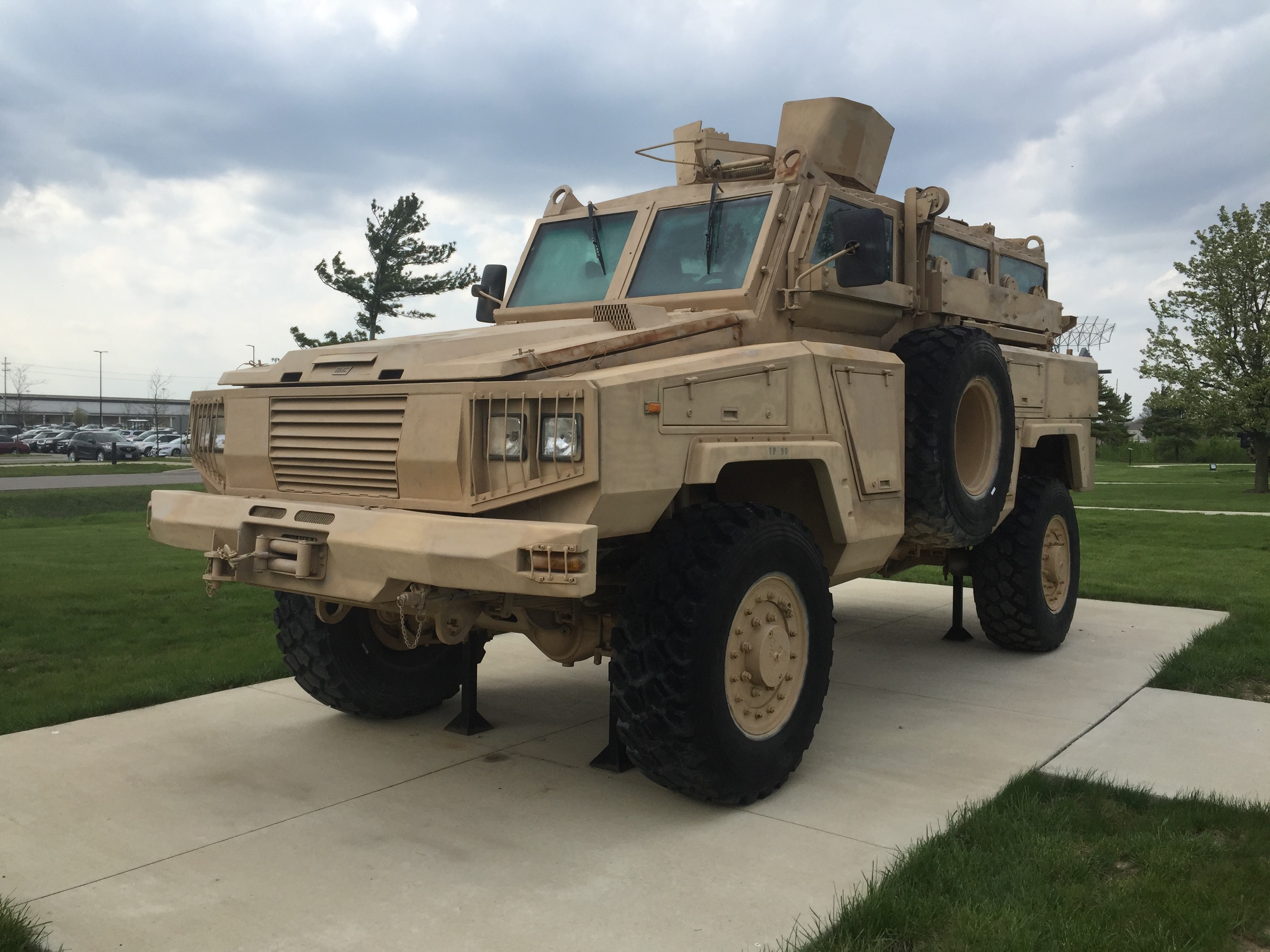 Mine Resistant Ambush Protected Vehicle M-ATV
Mine Resistant Ambush Protected Vehicle M-ATV
The Mine Resistant Ambush Protected (MRAP) All-Terrain Vehicle (M-ATV) (.pdf) is a smaller MRAP variant in a separate category within the MRAP family of vehicles. Its mission is small unit combat operations in highly restricted, rural, mountainous and urban environments, including mounted patrols, reconnaissance, security, command and control, convoy protection, communications, and combat service support.
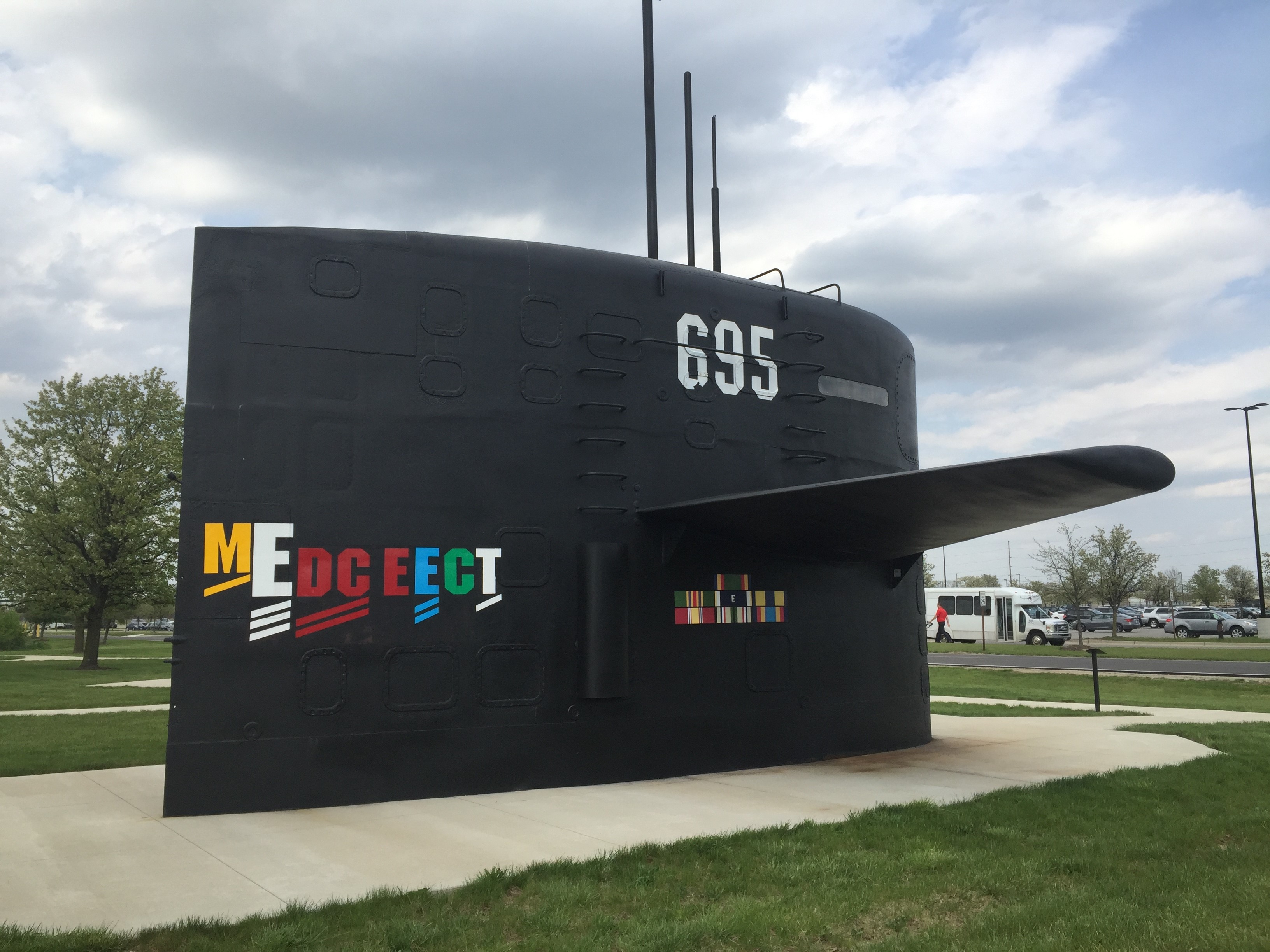 USS Birmingham III (SSN 695)
USS Birmingham III (SSN 695)
The USS Birmingham (SSN 695) was the third U.S. Navy ship named for the city of Birmingham, Alabama. The ship's construction contract was awarded January 24, 1972, and keel laying signifying construction start occurred April 26, 1975. The Birmingham was launched October 29, 1977 and later commissioned December 16, 1978. The Birmingham spent 19 years in active commissioned service before being decommissioned from active naval service December 22, 1997. Birmingham earned numerous awards, among them: the Navy Unit Commendation, four Meritorious Unit Commendations and four Battle Stars. The USS Birmingham was the eighth submarine built in the Los Angeles Class fast attack submarines, otherwise known as the “688” class—nuclear-powered submarines designed to hunt and destroy enemy submarines and surface ships. They represent two generations and close to half a century of the U.S. Navy's attack submarine fleet. There were 62 Los Angeles class submarines built. As of March 2023, 28 are still in commission. DLA Land and Maritime continues to support the Los Angeles class submarine as well as other classes of U.S. nuclear submarines. Over 88,000 different National Stock Number parts in support of the 688 class submarines are managed at DLA Land and Maritime.
 Mk 48 ADCAP Torpedo
Mk 48 ADCAP Torpedo
The Mark 48 ADCAP Torpedo and its improved Advanced Capability variant are American heavyweight submarine launched torpedoes. Operational since 1972, it replaced the Mk-37 and Mk-14 torpedoes as the principal weapon of U.S. Navy submarines. With a 650 pound high-explosive warhead and the ability to dive to depths greater than 1,200 feet, this torpedo is one of the principal weapons in the U.S. Navy submarine arsenal. They are designed to sink deep-diving nuclear-powered submarines and high-performance surface ships. The Mk-48 has a sophisticated guidance system permitting a variety of attack options. As the torpedo leaves the submarine's launch tube a thin wire spins out, electronically linking the submarine and torpedo. This enables an operator in the submarine, with access to the submarine's sensitive sonar systems, initially to guide the torpedo toward the target. This helps the torpedo avoid decoys and jamming devices that might be deployed by the target. The wire is severed and the torpedo's high-powered active/passive sonar guides the torpedo during the final attack. DLA Land and Maritime continues to support the newest Mk 48 ADCAP (MOD 7) Torpedo by providing logistical support on over 8,938 National Stock numbered parts to keep this weapon system up and running.
 MAXXPRO Dash Mine Resistant Ambush Protected Vehicle
MAXXPRO Dash Mine Resistant Ambush Protected Vehicle
The MaxxPro MRAP is designed to endure improvised explosive device attacks and ambushes and can withstand ballistic arms fire and mine blasts. MaxxPro Dash offers a smaller turning radius and a higher torque-to-weight ratio, which increases the mobility of the vehicle and makes it less prone to roll-over problems. The V-shaped hull design protects the vehicle against mines or IED blasts.
 M1A1 Abrams Battle Tank
M1A1 Abrams Battle Tank
The M1 Abrams entered U.S. service in 1980, replacing the M-60 Tank, and is an American third-generation Main Battle Tank produced in the United States. It is named after General Creighton Abrams, former Army Chief of Staff and Commander of U.S. military forces during the Vietnam War from 1968 to 1972. Highly mobile and designed for modern armored ground warfare, the well-armed and heavily armored M1 is one of the heaviest main battle tanks in service.
 AN/SPS-49 Radar Antenna
AN/SPS-49 Radar Antenna
The AN/SPS-49(V) radar is a long range 2D air search radar supporting Anti-Air Warfare missions on Oliver Hazard Perry class Frigates. The radar is used to provide long range air surveillance in severe clutter and jamming environments. Additional functions include air traffic control, air intercept control, and antisubmarine aircraft control. The AN/SPS-49 also serves as backup to the three-dimensional weapon system designation radar on-board.
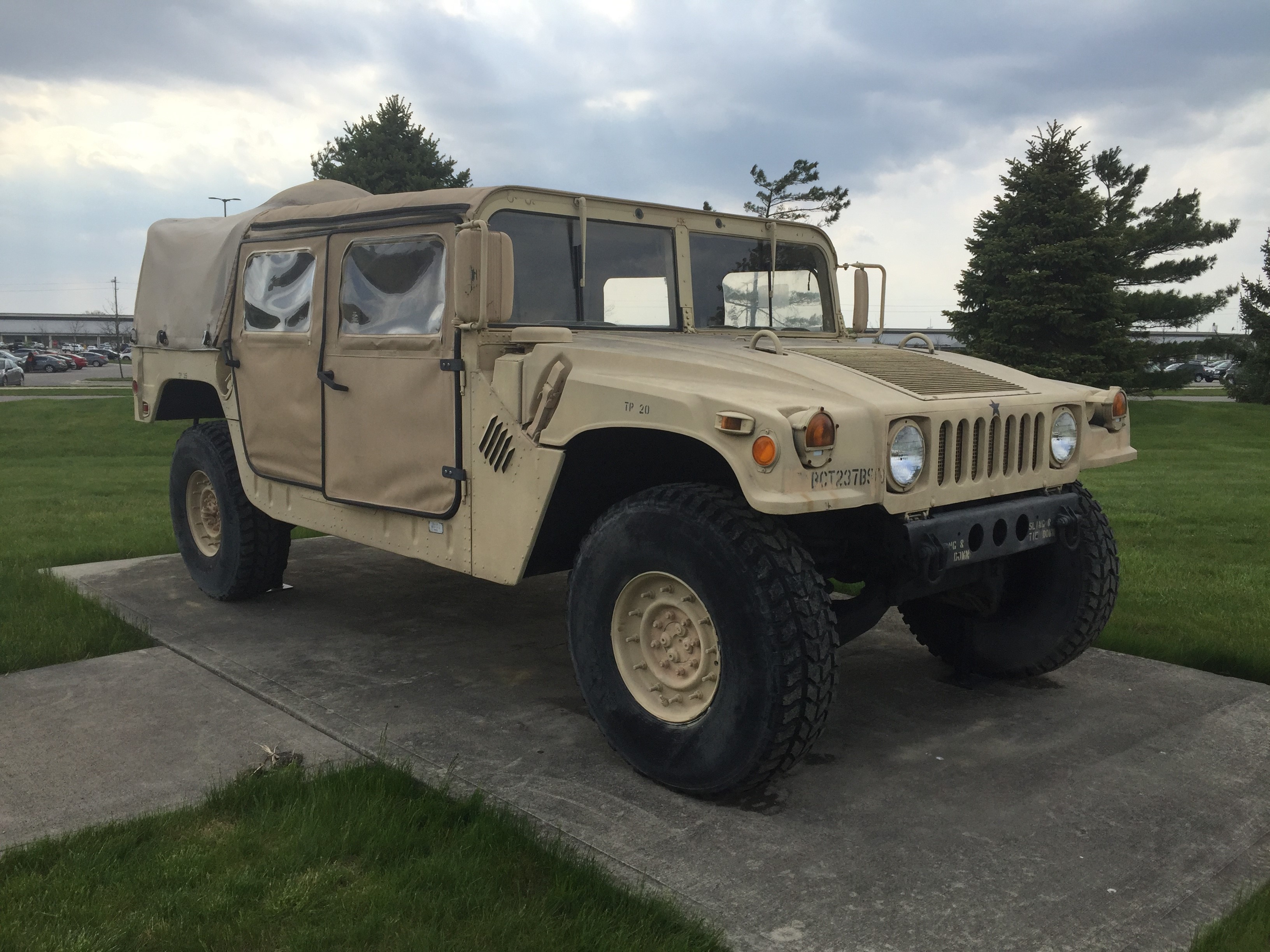 M998 HMMWVC
M998 HMMWVC
The High Mobility Multi-purpose Wheeled Vehicle (HMMWV) is the replacement vehicle for the M151 series jeeps. The HMMWV's mission is to provide a light tactical vehicle for command and control, special purpose shelter carriers, and special purpose weapons platforms throughout all areas of the modern battlefield. The HMMWV is produced in several configurations and the M998 is a cargo/troop carrier configuration of the HMMWV family.
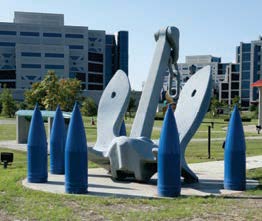 USNS Kiska 20,000 lb. Anchor
USNS Kiska 20,000 lb. Anchor
The USNS Kiska (T-AE-35) is one of five Kilauea class ammunition ships operated by Military Sealift Command, and one of 41 ships in the Naval Fleet Auxiliary Force. The Kilauea class ammunition ship is a class of eight United States Navy cargo vessels designed for underway replenishment of naval warships. The ships were constructed from 1968-72 and were initially commissioned naval ships. At various dates, 1980-96 these ships were decommissioned and transferred to Military Sealift Command for civilian operation. They will eventually be replaced by the Lewis and Clark-class dry cargo ships. The last ship of the class, Kiska, was commissioned on December 16, 1972.
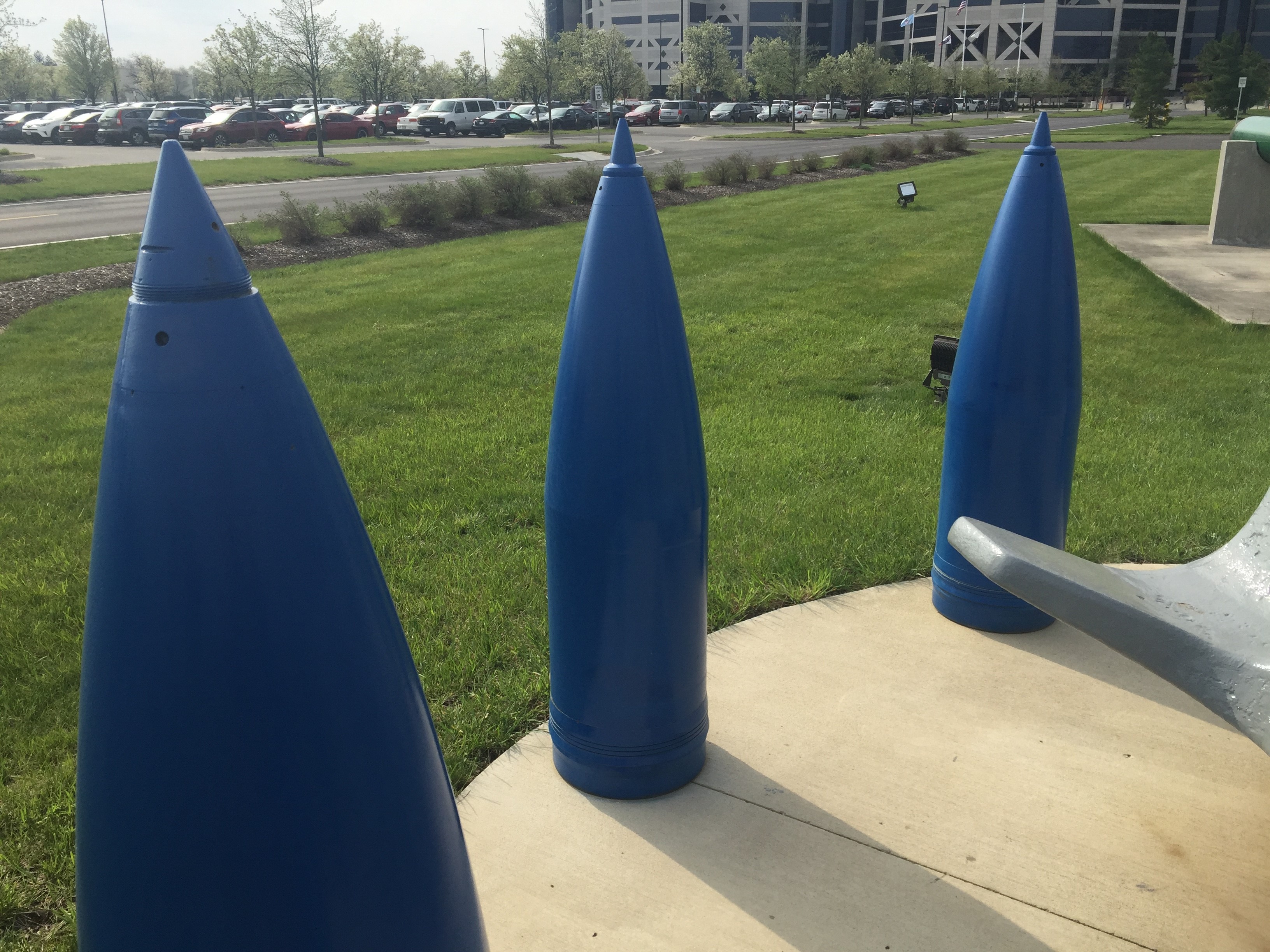 16" Mark 8 Naval Gun Shell
16" Mark 8 Naval Gun Shell
The Mark 8 was the main armament of the Iowa-class battleships. Fired from the Mark 7 United States Naval Gun, these guns were over 50 calibers long or 50 times their 16-inch bore diameter, making them 66.6 feet in length. The Mark 8 shell was capable of being fired up to a range of over 25 miles. At maximum range, the Mark 8 shells spent almost 1 1/2 minutes in flight. Each gun weighed about 239,000 pounds and each three gun turret required a crew of 79 men to operate. The Mark 7 guns were in service for the U.S. Navy from 1943-1992.
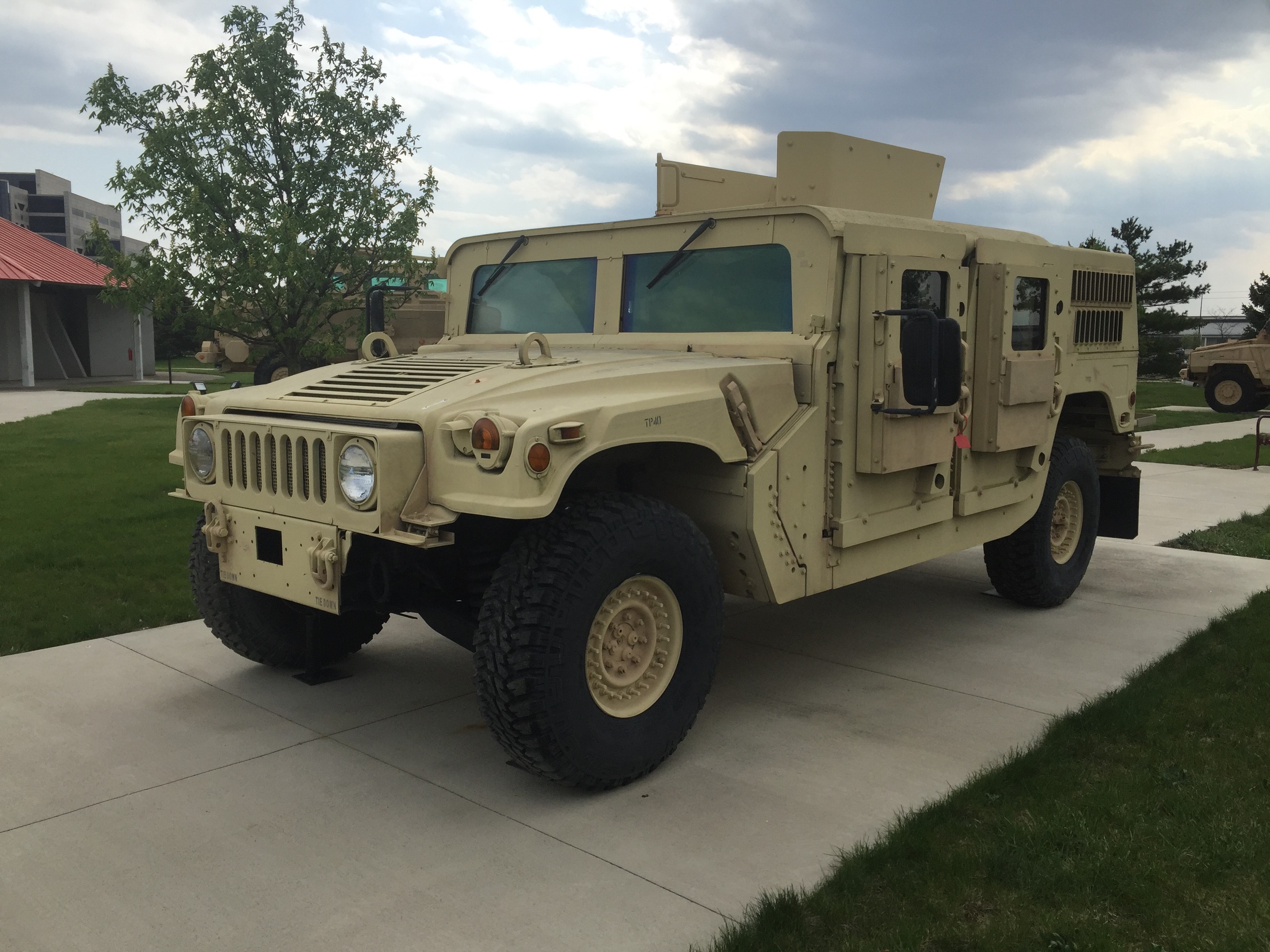 M1116 HMMWV Up-Armored Armament Carrier
M1116 HMMWV Up-Armored Armament Carrier
The M1116 Up-Armored HMMWV was used by the US Air Force and US Navy for Security Forces and Civil Engineering missions plus EOD and Base Recovery After-Attack missions. It featured a gunner protection kit, traversing turret mechanism, expanded rear compartment and added underbody M67 grenade fragmentation protection. It could also be refitted with the various Fragmentary Armor Kits (Frag Kits) developed and upgraded gunners stations, such as the Objective Gunner Protection Kit.
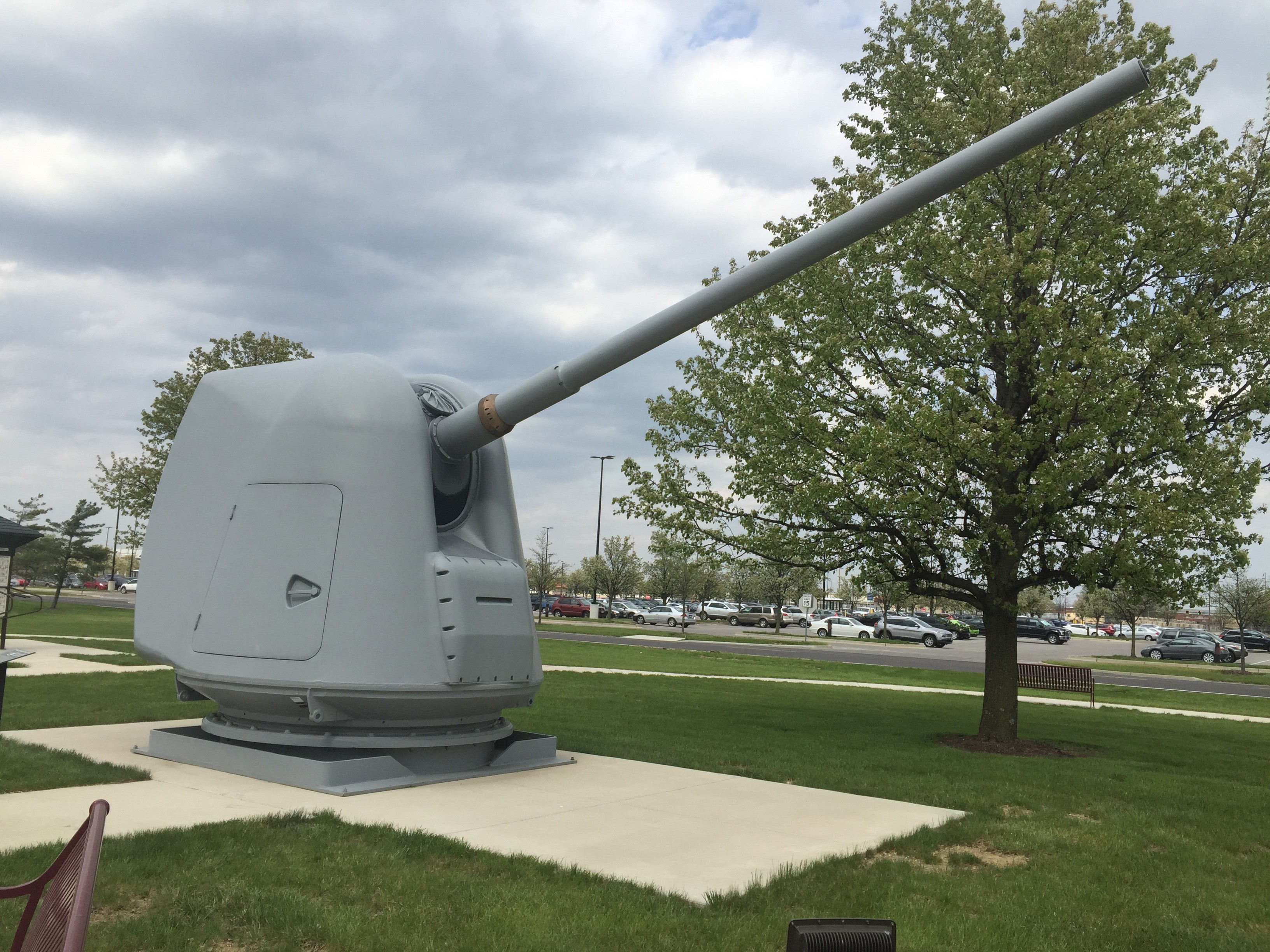 Mk 45 5-inch 54 Caliber Gun
Mk 45 5-inch 54 Caliber Gun
The MK 45 gun is a modern U.S. naval artillery gun. This gun is designed to engage surface and air targets and to provide naval surface fire support for expeditionary operations. The latest MK 45 Mod 4 version includes a longer 5-inch/62-caliber barrel fitted on the same Mark 45 gun mount. Utilizing a computerized gun fire control system and fully automated, the MK 45 is capable of firing 16-20 rounds per minute to a range of 13 nautical miles (14.9 statute miles). MK 45 guns are installed aboard all Ticonderoga class cruisers (CG 47) and Arleigh Burke class destroyers (DDG 51). DLA Land and Maritime continues to support the Mark 45 5-inch gun though the management of over 4,000 National Stock Numbered parts in support of this weapon system.
 Buffalo - Mine Resistant Ambush Protected Vehicle
Buffalo - Mine Resistant Ambush Protected Vehicle
The Buffalo Mine Resistant Ambush Protected Vehicle (MRAP) is a specialized route clearance vehicle, used for route-proving and disposal of discovered mines, IEDs and other explosive hazards. The Buffalo MRAP has a large articulated robotic arm, used for ordnance disposal. This hydraulically operated arm is used to handle suspicious items from a distance. It is fitted with an armed day/night video camera. Crew can safely investigate anything the arm can reach. The robotic arm is used to probe, remove or place destruction charges near possible landmines.
 Guided-Missile Destroyer Propeller
Guided-Missile Destroyer Propeller
The Guided-missile Destroyer (DDG) Propeller , also referred to as the 'screw' in nautical terms is an important part of a navy vessel's propulsion system. This screw comes from the first class of guided-missile destroyers, the “Charles F. Adams-class”. This class of destroyer was produced during the late 50s and into the 60s. These destroyers served during the blockade of Cuba in 1962 and during the Vietnam War where they excelled at anti-submarine warfare and engaging long-range missile threats..
 Husky Mk2 Vehicle Mounted Mine Detector
Husky Mk2 Vehicle Mounted Mine Detector
The The Husky Metal Detecting and Marking Vehicle is part of a larger system called the Vehicle Mounted Mine Detector. The VMMD is a mine protected, vehicle mounted mine detection and proofing system which is capable of finding and marking metallic explosive hazards. Husky acts as the prime mover for the full width mine proofing/detonation trailers and redpack. It can also serve as an alternate detection vehicle with two detector panels that raise and lower depending on terrain.
Hope Garden
On the north side of Mission Park is a stand of trees marking an area designated as Hope Garden. The 12 trees of Hope Garden are dedicated to victims and survivors of domestic violence and child abuse. The 12 trees - six Whitespire Birch and Cumulus Serviceberry - serve as a living memorial to those that have lost their lives to abuse and a symbol of the resilience of the survivors. Adjacent to Hope Garden is a bench that invites visitors to stop and reflect on the hope that someday domestic and child abuse will be eliminated.
This garden is an ongoing project of Defense Supply Center Columbus Facilities, Environmental and the Morale, Welfare and Recreation’s Family Advocacy Program . The 12 trees are native trees of Ohio and replaced an invasive species contributing to the destruction of native habitat.
Mission Park Pavilion
On the south side of Mission Park is a large red roofed pavilion used for picnics, ceremonies and other large group events. The pavilion has a stage and large area and is open ended on several sides.